Behind the scenes at Dolby Labs: this is what your eyes and ears have been missing
A history of aural excellence is only the beginning
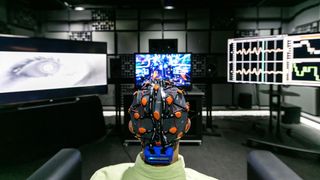
The iconic Double D logo of Dolby is amongst the most recognizable in the world. Shell, Pepsi, Nike, Apple, and Dolby – all companies that you'd be able to acknowledge even if no verbiage were surrounding the graphic. Dolby's legacy in audio has long since been cemented. The mere mention of the word usually conjures up parallels to high-fidelity, but ask people what Dolby actually does, and you're apt to get an assortment of answers.

We traveled to the company's newly-minted San Francisco headquarters to make a determination of our own. What we found were floors upon floors of working laboratories, with some of the world's best and brightest surveying outsiders on how a certain scene impacted them, playing video games in the name of science, and quietly assembling a suite of products that will almost certainly define the next big thing in audio visual entertainment.
Listen up

Though we're massively oversimplifying things, what Dolby does best is process. Artists and filmmakers capture footage, and Dolby processes the myriad signals in a way that strikes the human brain as most impressive. For decades, the company's audio processing has enabled ho hum televisions to simulate – quite well, might we add – surround sound. More recently, Dolby's tech has ended up in smartphones, enabling 5.1 capture using the various microphones already found in most modern handsets.
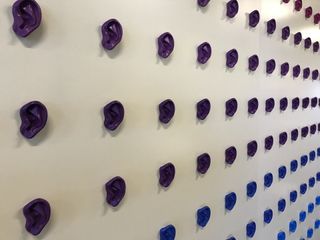
So, Dolby takes audio and makes it sound more awesome/unbelievable/noise-free. What of it, right? In our walkthrough, we spoke with Dolby CMO Bob Borchers, an accomplished Apple alumnus that worked to launch and market the original iPhone. He described the potential of the company's current position as enormous, aided in large part by its unique ability to wow people in a cinema, and then transfer that experience to the home, the tablet, the phone, and even external venues like London's Ministry of Sound nightclub.
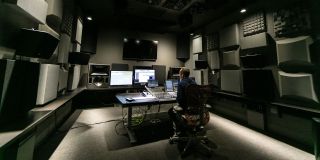
It's not entirely unusual to find a company that plays in both commercial and consumer realms, but it's exceedingly rare to find one that designs and develops its product line for both. In other words, the Dolby Atmos experience you have in a multi-million dollar theater is roughly the same one available in the home using an Atmos-certified AVR and speaker arrangement. The scale would differ, yes, but the processing, quality, and impact is nearly identical.
Redefining surround

Atmos is Dolby's latest creation to push surround sound to the next logical plateau. Bob Borchers believes that Dolby "operates at the intersection of art and science," which is most definitely a fun place to be. The art portion of that enables sound engineers to paint an aural picture almost literally. When sitting through a nature demo with John Loose, Director of Audio Visual Production, he noted that producers were able to use a joystick to pan a bird's flight path over the head of the viewer, pushing it slightly left as it moved from back to front.
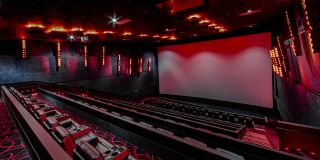
The use of overhead speakers creates an immersive impact that's unlike any surround system to date, and in fact, Dolby engineers have figured out a way to achieve that immersion without forcing you to cut holes in your ceiling. By using a technology developed in-house to affix upward firing drivers to floor standing speakers, Atmos is able to divert audio in a way that rains down overhead after a carefully timed bounce.
Get daily insight, inspiration and deals in your inbox
Get the hottest deals available in your inbox plus news, reviews, opinion, analysis and more from the TechRadar team.
That, if you hadn't noticed, is the "science" part of the aforementioned intersection.

We were fortunate to be in a room equipped with both upward firing drivers and overhead, ceiling-mounted speakers. The demo enabled us to toggle between both, and there was essentially no perceptible difference. Said another way, Dolby's wizards just saved every homeowner ever the hassle of chiseling out holes in their ceiling in the name of aural amazement. (It probably saved a few marriages in the process as well, but don't quote us on that.)
Attainability
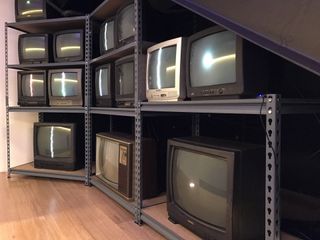
What's most impressive about Atmos is that you don't have to visit a properly equipped cinema to get it. Within the past year, both Yamaha and Samsung revealed Atmos-enabled soundbars, which feature upward firing drivers that do a freakishly solid job of surrounding your world with sound with minimal installation effort. A speaker system costing hundreds of thousands of dollars in the local theater surely sounds great, but so do these $1,500 soundbars.
Scaling down another level, we were treated to the intro scene of Mad Max: Fury Road on a device that we secretly assumed would ruin the Atmos allure: a bantam Lenovo Tab 3 Pro. At a glance, it looks like a middling tablet that you might buy on impulse if priced right during Black Friday. Beneath the display sits a foursome of speakers and a processor that recognizes a Dolby audio signal when it sees one. What happened next continues to defy logic, days after we've had time to digest it: the surround sound experience emitted from a tablet – a tablet, y'all – was nothing short of mind-bending.

If you aren't familiar with the film, it begins with a series of whispers that bounce around a lead character's mind. In the demo space, those whispers seemed to bounce around the physical space we were in. It seems reasonable to think that a company with smart audio engineers could pull off something impressive if working in an isolated theater with an unlimited budget, but to achieve believable surround in a mid-range tablet with four tiny speakers? That's laudable.
It's tough to say when Atmos will be baked into other devices – namely, Apple's iPhone and iPad range – but it shouldn't take much convincing on Dolby's part.
Vision – or, the new kid on the block
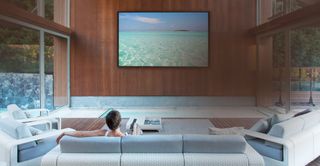
Perhaps Dolby's biggest area for growth is in a realm that most people don't even know it plays in: visuals. Dolby Vision is the company's HDR processing arm, which showed massive promise in our time at headquarters.
To give a bit of context, let's rewind the clock on in-home television. The transition from SD to HD was akin to everyone getting a color TV. The difference was stark, impossible to miss, and immediately justified an upgrade. Once you watched [insert favorite program here] in high-def, it become impossible to watch that same material in standard-def.
Since that leap, we've had two notable attempts for replication: 3D (which failed, despite loads of hype and marketing dollars) and 4K (which the jury is still out on). Consumers are relatively timid when it comes to believing grandiose statements about the future of television, primarily because of how poorly 3D and 4K have lived up to their world-changing expectations.
HDR > 4K (but we'll have both, please)

The reality of 4K is that few people have a living space that allows them to actually take advantage of the increase in resolution. Unless you buy a bigger set or move your couch closer to the screen, the pixels look essentially the same. We liken this to the great megapixel war that camera manufacturers faced a decade ago. At some point, consumers realized that a 45 megapixel point-and-shoot was not superior to a 20 megapixel micro-four thirds camera; once you hit a given resolution, processing power and logic become more vital to output quality.
We're in a similar spot now in the TV realm. Witnessing an HDR television pump out content that's color mapped to take advantage of added brightness and a heightened contrast ratio is an otherworldly experience. Some of today's high-end HDTVs boast 800 to 1,000 nits, which enables HDR material (like that stamped with Dolby Vision) to express a greater dynamic range.
To the human eye, that makes reds red (as opposed to washed-out orange, as has been the case since the dawn of humanity), blacks inkier, and shadows more defined. These sets, coupled with Dolby Vision color grading, enable content producers to show their audiences colors that were not possible to show on prior generation televisions. The hardware was actually incapable of displaying colors as rich as they were being captured.
Interestingly, Dolby Vision supports the HDR10 standard, but it also includes metadata that goes well beyond that. Representatives for the company informed me that its color graders usually work on reference monitors that have at least 4,000 nits, and Dolby Vision material is coded to take advantage of those Cyclops-esque brightness levels. That means that as consumer HDTVs become brighter over time (and, presumably, ship with welding masks), Dolby Vision material you purchased years ago will already be equipped to take advantage.
Expanded purpose
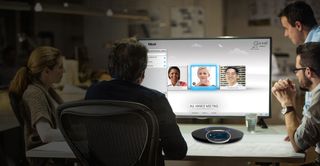
In just the past year, Dolby Cinema – a one-two punch of Atmos on the aural side and Vision on the projector side – has been outfitted or committed to in over 200 cinemas across the globe. In the US, AMC has committed to open 50 Dolby at AMC locations by the end of 2016, and 100 by 2017. We watched a variety of test clips in a Cinema environment, and for the first time in a long time, we've found a larger-than-life experience that's probably worth paying today's absurd ticket prices for. (We still love you too, IMAX!)
Where Dolby's future growth sits is in visual. We've reached a point where consumer televisions now boast enough brightness and a dramatic enough contrast ratio to display colors in a way that only producers have seen. That milestone has enabled Dolby to attack the other half of the AV spectrum in a big way. Just as you'd never aspire to purchase a new vehicle or smartphone without Bluetooth support, you'll soon want nothing to do with a TV upgrade that isn't HDR capable. It's just that good.
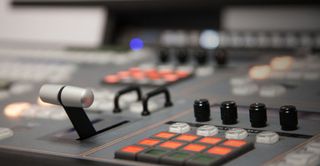
Dolby Vision will be vying for HDR dominance with a handful of rival formats (have a look at our behind the scenes tour of Ericsson for more on that), but as we've seen with Apple's iOS, Google's Android, and Amazon's Fire lineup, there's power in the ecosystem. Dolby Vision + Atmos is a compelling two-pronged approach, and in our time with those who make the magic happen, we were impressed by the desire for this stuff to be successful not just in the cinema, but in the home and phone.
On a mission

So, what exactly does Dolby do? It makes the sound + visuals of the material you enjoy look and sound like the creators' intended it – a mantra that we heard echoed a few months back when talking to sound engineers at Harman.
Deeper, bolder, and more immersive is the goal, but not in a hokey, someone-let-this-guy-crank-the-Instagram-filter-to-100 fashion. The whole goal of film is to suspend a viewer's belief, if only for a few minutes or hours. As crazy as it sounds, audio that seemingly emerges out of the ether and colors that more accurately represent real life go a long way in achieving precisely that.
Most Popular

